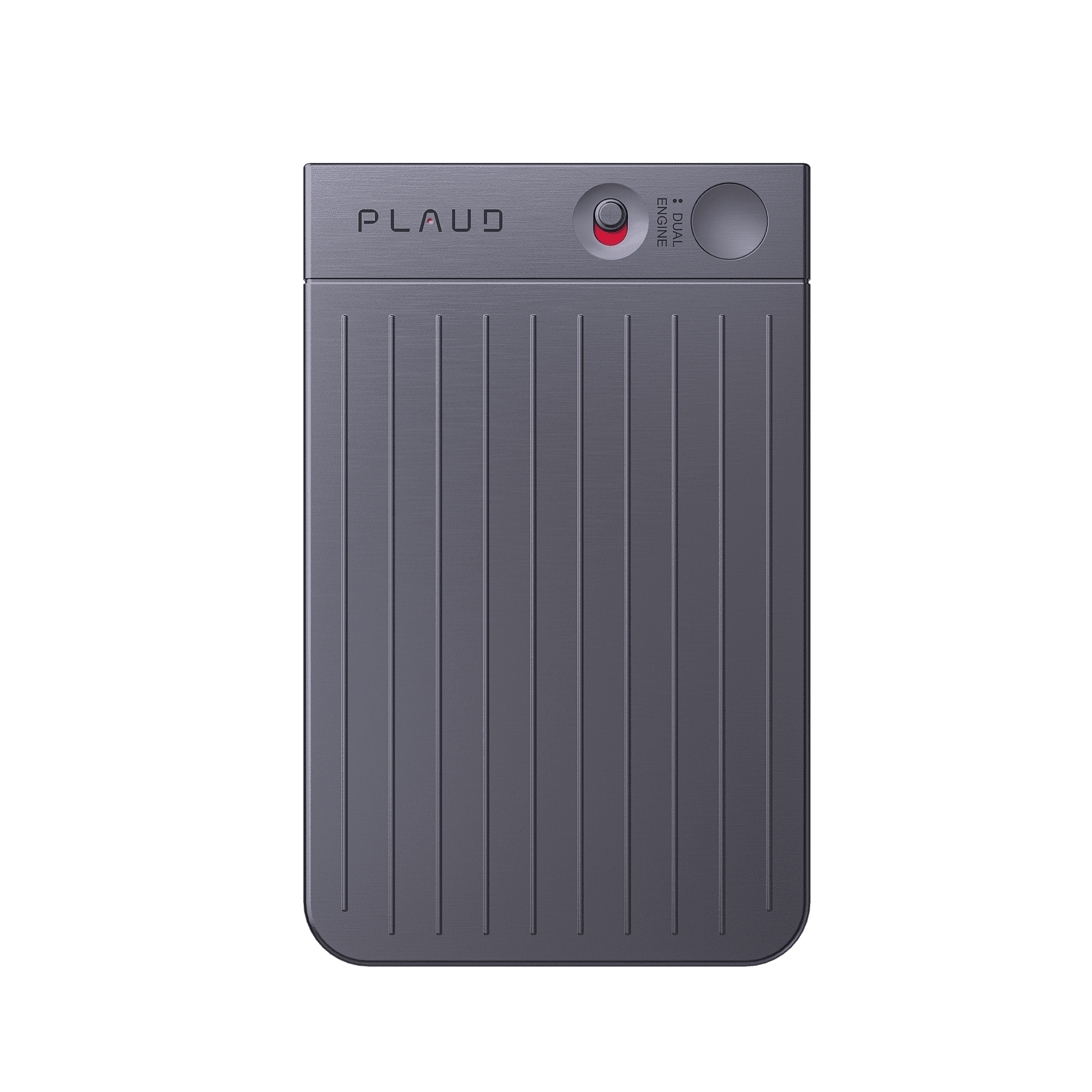Every sales manager knows how frustrating it is to have a deal look perfect on paper and then get high interest from the client, only for it to stall. This often occurs when the discussion fails to uncover the actual need that will drive the customer to complete the purchase. Remember, a successful sale is a direct result of a fundamental skill: understanding what your customer wants and showing that your product is the solution to that need.
In this concise, call-driven playbook, we’ll show you how to equip your team with that skill. We’ll help you become experts at translating customer conversations into clear, actionable insights by using an AI note taker like Plaud Note. Even with great listening, details get lost. Plaud Note captures and organizes every customer signal, so your team never misses what truly matters.
What do we mean by customer needs?
What are customers' needs? Put simply, one’s needs serve as the impetus for someone (or an organization or business entity) to make a purchase or seek a solution. These needs can be divided into two types:
- Explicit needs: These are the needs expressed by the customer. They are the surface-level demands, like “I need a CRM that costs less” or “We need something to record our video calls.”
- Implicit needs: These are the unstated, underlying wants or pain points. For customers looking for a cheaper CRM,
fewer than 10% might also have the implicit need to reduce overhead. The team that has to record calls may also be the one that requires a solution to better coach its struggling junior reps.
How to understand customer needs: practical tips and tools
Sales managers can turn discovery calls from simple Q&As into strategic listening sessions. The key is moving beyond surface-level problems to uncover the real challenges and goals that drive customer decisions.

Turn conversations into decisions with Plaud Note
Plaud Note makes this possible by capturing the entire conversation, allowing the salesperson to concentrate on the customer. For instance, after the call, a manager can use the Ask Plaud feature to see how many times a competitor was mentioned. If competitor X is frequently discussed, it’s clear the manager should give the sales rep a battle card to use against that competitor before any follow-up calls.
Dig deeper in the discovery phase
Sales reps often make the mistake of giving up questioning too soon. They see some surface issue, but never go deeper to understand the “why” and how.” This inability to connect the problem to what the customer needs is why so many deals stall.
Use the What-Why-How technique
Use this technique to get to the root of the problem:
- What: Start by identifying the surface-level problem. (“What is the biggest challenge with your current process?”)
- Why: Uncover the root cause and its business impact. (“Why is that a challenge? What happens when that process fails?”)
- How: Connect your solution to tangible business benefits. (“How would it impact your team’s revenue if you could eliminate that failure point?”)
Ask about the ideal solution
Another powerful question is to ask about the customer's ultimate goal. You could frame it like this:
- “Fast forward six months and this implementation becomes a massive success, what does that look like for your team?"
This question encourages the customer to think beyond their current limitations. With Plaud Note capturing the full response, you can later use Ask Plaud to analyze their answer and compare their expectations directly to your product offering.
Listen and capture all answers
The key to deep discovery is active listening, which is impossible when a rep is frantically trying to type notes. Plaud Note's high-accuracy transcription enables a representative to fully engage in the conversation, focus on the customer's responses, and ask thoughtful follow-up questions, knowing that every detail is being captured perfectly.

Analyze customer data
True customer needs are often hidden in the details of past conversations. After a call, a sales manager's most valuable coaching tool is the call record. Instead of re-listening to an hour-long call, a manager can use the Ask Plaud feature as a personal analyst to explore emotional and practical pain points by asking:
- "What were the key pain points the client mentioned?"
- "How did the client describe this affecting their team?"
The AI analyzes the full transcript to provide concise answers, including both emotional ("My team is frustrated") and practical ("We are losing 10 hours a week") impacts. This allows a manager to assess if their rep is digging deep enough quickly and to identify coaching opportunities.

How to turn customer needs into actions
Uncovering your target market's needs is only half the battle. The next step is to structure those insights into a plan.

Step 1: Categorize your insights
After a discovery call, use the insights from your Plaud Note summary to organize findings into key themes, such as Pricing, Key Features, Integration Needs, and Customer Experience. This helps you see patterns in the customer's thinking before analysis.

Step 2: Conduct a means-end analysis
This is a powerful way to connect your product to the customer’s ultimate goal. Break it down into three tiers:
- Features: What the customer is buying (e.g., AI-powered transcription)
- Benefits: Why they want it (e.g., to have a perfect record of every call)
- Value: The ultimate business outcome (e.g., reps can make more calls and hit quota)
Step 3: Visualize your data
Use the categorized insights and the means-end analysis to create a simple visual, such as a mind map or flowchart. This makes the findings easy to understand and share with other stakeholders, such as product or marketing teams.
Step 4: Create an action plan
Turn the insights into a concrete plan with assigned responsibilities. For a sales manager, this means creating a coaching plan for the rep or sending a follow-up email and proposal. For example, if research shows a missing feature, the action plan is to communicate this need to the product team.
Understanding customer needs: Why is it important?
Many deals fail because the sales process is built around the product's features rather than the customer's actual problem. The most important part of the sale (the discovery) is rushed. A shallow discovery, where sales only uncover surface needs, results in unrealistic forecasts, standardized demos, and deals stalling. There is no value for the client unless you can demonstrate (empathize) how painful solving “this” problem is and how your solution can relieve their pain.
Established sales frameworks, like SPIN Selling, the Sandler Pain Funnel, and BANT, are all built on one foundational principle: you can’t sell something to someone who doesn’t need it. Understanding customer needs is at the core of this process.
How sales frameworks can help uncover customer needs
Your team doesn’t need to do everything and reinvent the wheel. They can follow established systematic processes for discovering customer needs:
- Sandler pain funnel: This comprises a set of questions designed to dig deeper than a prospect’s surface problem, down to the personal and emotional pain that motivates them to act.
- BANT framework: This is a qualification method that ensures the customer has enough budget, authority, need, and time to buy. Hence, you're not talking with a prospect but a buyer.
- SPIN selling: SPIN is an acronym for situation, problem, implication, and needs-payoff. This questioning methodology helps salespeople understand a prospective client’s thinking process, thereby better understanding customer needs.
Conclusion
Revenue and operational growth can be easily achieved by sales managers who have built teams that understand their customers' needs. It’s about getting past superficial discovery and empowering your reps with the tactics and tools to be expert listeners who can address their target market’s pain points.
By training them to dig deeper and use technology, such as Plaud Note, which enables you to capture and analyze every detail, you can turn your sales conversations from a series of pitches into a data-driven diagnostic session that leads to closed deals.
FAQ
What are the four primary customer needs?
While it varies by context, customer needs are often categorized into four areas:
- Price (the cost is fair and within budget)
- Convenience (the product is easy to use and acquire)
- Performance (the product is reliable and does its job well)
- Support (help is available when needed)
How to use Plaud Note to understand customer needs?
Use Plaud Note to record and transcribe discovery calls. This frees up the sales rep to listen actively and ask deeper questions. After the call, use the Ask Plaud feature to quickly summarize pain points, ideal solutions, and other key insights from the transcript.
What are the three ways to find out a client's needs?
The three primary ways are to:
- Ask direct questions through structured discovery calls and interviews.
- Analyze existing data by reviewing past conversations, support tickets, and CRM notes.
- Observe the clients’ behavior by watching how they use a free trial or navigate your website to understand their challenges.





